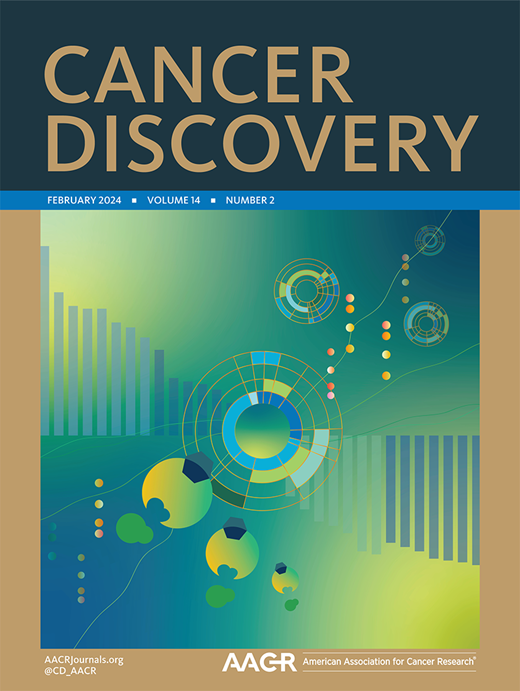基因组加倍肿瘤中染色体不稳定性的历史
IF 29.7
1区 医学
Q1 ONCOLOGY
引用次数: 0
摘要
肿瘤经常表现出高度的染色体不稳定性,并包含多个基因组区域拷贝。在这里,我们介绍了 GRITIC,这是一种利用单样本批量全基因组测序数据对导致复杂拷贝数状态的基因组增益进行计时的通用方法。通过对 6091 例肿瘤应用 GRITIC,我们发现在基因组双倍的肿瘤中,非拟合进化在复杂拷贝数状态的形成过程中非常频繁。我们测量了人类肿瘤基因组复制前后的染色体不稳定性,发现晚期基因组倍增后,拷贝数增殖率增加。拷贝数增殖通常在基因组倍增后以点状爆发的形式累积。我们推断,基因组复制通常会影响拷贝数丢失的情况,而对拷贝数增加的影响很小。总之,GRITIC 是一个新颖的拷贝数增益时间框架,可以分析染色体不稳定肿瘤的拷贝数演变。本文章由计算机程序翻译,如有差异,请以英文原文为准。
The history of chromosomal instability in genome doubled tumors
Tumors frequently display high chromosomal instability and contain multiple copies of genomic regions. Here, we describe GRITIC, a generic method for timing genomic gains leading to complex copy number states, using single-sample bulk whole-genome sequencing data. By applying GRITIC to 6,091 tumors, we found that non-parsimonious evolution is frequent in the formation of complex copy number states in genome-doubled tumors. We measured chromosomal instability before and after genome duplication in human tumors and found that late genome doubling was followed by an increase in the rate of copy number gain. Copy number gains often accumulate as punctuated bursts, commonly after genome doubling. We infer that genome duplications typically affect the landscape of copy number losses, while only minimally impacting copy number gains. In summary, GRITIC is a novel copy number gain timing framework that permits the analysis of copy number evolution in chromosomally unstable tumors.
求助全文
通过发布文献求助,成功后即可免费获取论文全文。
去求助
来源期刊

Cancer discovery
ONCOLOGY-
CiteScore
22.90
自引率
1.40%
发文量
838
审稿时长
6-12 weeks
期刊介绍:
Cancer Discovery publishes high-impact, peer-reviewed articles detailing significant advances in both research and clinical trials. Serving as a premier cancer information resource, the journal also features Review Articles, Perspectives, Commentaries, News stories, and Research Watch summaries to keep readers abreast of the latest findings in the field. Covering a wide range of topics, from laboratory research to clinical trials and epidemiologic studies, Cancer Discovery spans the entire spectrum of cancer research and medicine.
 求助内容:
求助内容: 应助结果提醒方式:
应助结果提醒方式:


